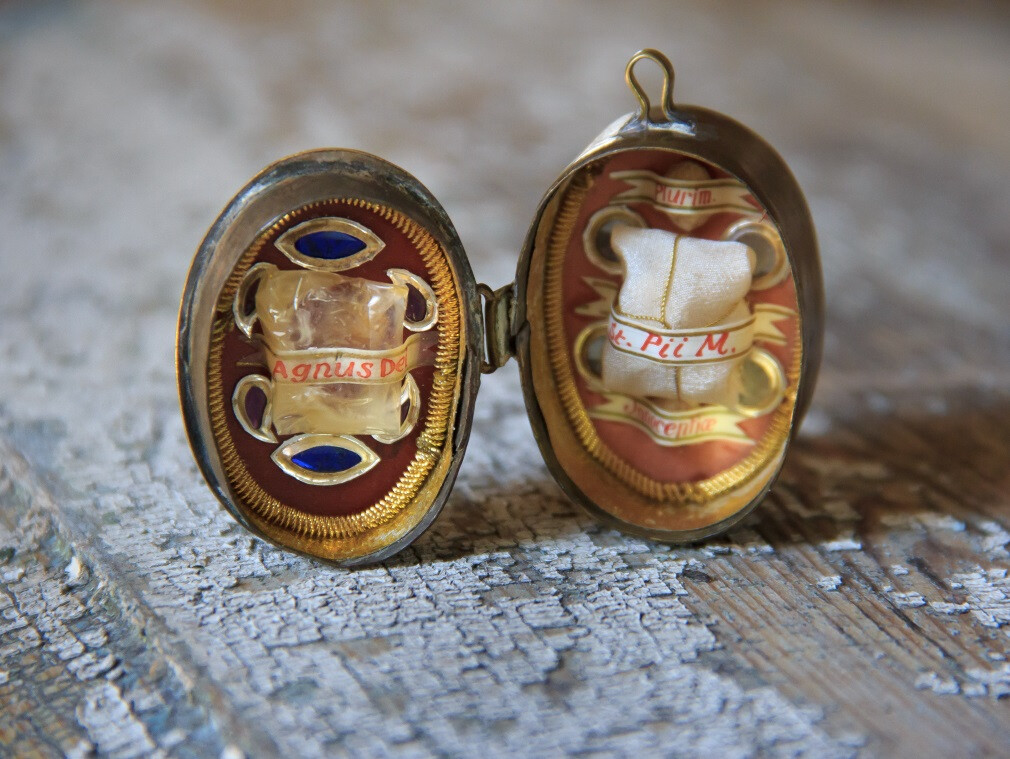Relics

As Fr. Dennis has shared, we have acquired and been gifted additional relics that can be viewed in the church new reliquary, located by Our Lady of Perpetual Help. In this reliquary is also the relic of the True Cross, the cross of Christ, that used to be displayed in our chapel. Many people have questions about the origin and meaning of relics.
Relic derives from the Latin reliquiae, meaning "remains," and a form of the Latin verb relinquere, to "leave behind, or abandon," - some object, notably part of the body or clothes, remaining as a memorial of a departed saint. A reliquary is a shrine/box that houses one or more religious relics.
The earliest account of relics dates back to 156 when St. Polycarp was martyred. His disciples wished to carry off his remains but the Jews urged the Roman officer to refuse his consent for fear that the Christians would only abandon the Crucified One and begin to worship this man. They gathered his bones and found a fitting burial.
Veneration of relics then grew in the church due to countless miracles as a result of prayers to the saints who are intercessors to God for us. Relics are more than mementos. The New Testament refers to the healing power of objects that were touched by Christ or his apostles. The most common relics are associated with the apostles and those local saints renowned for the working of miracles across Europe.
In the same way, we have the tradition to visit the grave of a loved one. Although their soul is in eternity, we visit the place where they were buried, knowing that we will be united with them again in heaven. In the same way, we treasure our loved ones rosary or prayer book for instance, as these objects are reminders of our loved one. They comfort us when we need them. In the same way, relics are used in the church. Relics are the physical presence of a saint in our midst. We are reminded of their holy life and how they continue their mission on earth through praying with and for us.
Many years ago, relics contained tiny fragments of bones, teeth, or blood. Today, first class relics of modern day saints contain a piece of hair, nails, or skin. First-class relics are from the body of the saint. Second-Class Relics are items the saint owned, such as clothing, or frequently used items, such as a crucifix, rosary, or book. Third-Class Relics are any object that has been in contact with a first or second-class relic.
One example of the use of a relic happened when I was on the Mother Angelica show. The staff placed a glove of St. Padre Pio on my head and prayed to the Holy Spirit to enlighten the conversation on television.
St. Jerome explained relics this way: “We do not worship, we do not adore, for fear that we should bow down to the creature rather than the Creator, but we venerate (give honor) the relics of the holy ones in order to adore God whose martyrs they are.” Relics remind us that the sacred is in our midst through holy men and women who gave themselves to God as models for us today. Reading the lives of the saints that lived among us, is a reminder that God reveals himself to us through their lives and is present to us in the holy men and women that we are able to encounter today.
